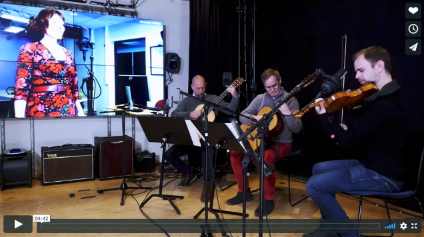Picture Carmen
Backgroud
Our task was to plan and produce a promotional video for a new chamber version of the Opera Carmen by George Bizet. Roy Henning Snyen, a classical guitarist and teacher at the department of musicology at the University of Oslo, has arranged Bizet’s opera for a small ensemble consisting of violin, two guitars and three singers. In our case, only the main singer was included.
In this chamber version of the opera, the ensemble goes straight to the core of the drama between the three main characters and stay close to the novel by Prosper Mérimée. The musicians are an integral part of the performance on stage, helping to portray the essence of Bizet’s musical universe in a setting that reflects the gypsy-life in Sevilla, Spain, approx. 1820.
Objectives
Our objectives were:
- Producing professional video over two locations that can be used by the opera production team as a promotional video for getting funding, performance opportunities, audience, and exposure.
- Utilizing the technologies available in the portal as well as our skills and expertise, for creating this promotional video.
Implementation
Implementation, execution and results We divided the production into four main stages that include clear tasks and milestones:
- First stage was testing technology and methods.
- Second: Audio recording - producing high-quality audio that will be used in the video and that the musicians can use as playback for video filming.
- Third part was the video shooting.
- Post-production - Mixing and mastering of the audio and editing the video into a coherent piece of work.
We concentrated on three main dates as milestones:
- October 17th (week 42) - Initial testing of the LOLA system
- November 2nd-3rd (week 44) - Test recording with the musicians in the portal
- November 8th-10th (week 45) - Audio recording and filming in the portal
In Oslo
Espen and Guy prepared the portal to record the violinist and two guitarists. After deciding on the placement of the musicians in relation to the screen which was projecting the singer from Trondheim, we installed the video and lighting equipment and experimented with different cameras, camera angles and movements, different lighting setups, etc. The audio recording from both locations was conducted in Oslo and Guy was responsible for that. We kept a shared screen of the Ableton session on zoom for Sepehr to monitor from Trondheim as well. Espen ran the video recording, directing the musicians during the playing and interviews, filming, etc.
In Trondheim
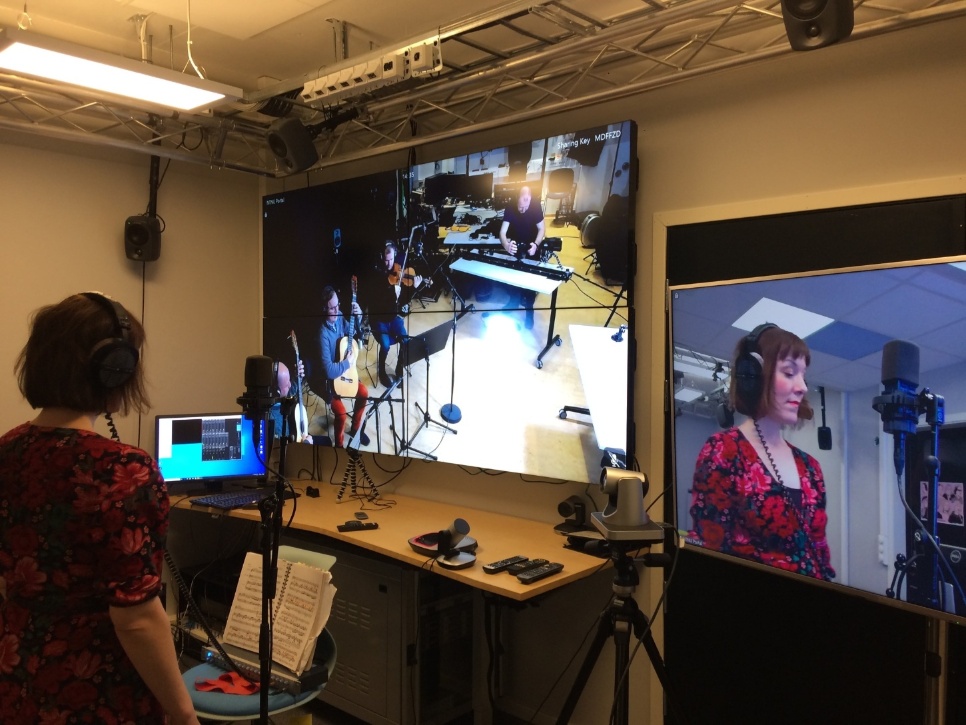
Sepehr prepared the portal for the audio recording of the singer as well as the video broadcasting of the singer over zoom. He monitored the Ableton session recording from Oslo via shared screen and troubleshooting all audio issues that came up during the recording session.
The Audio Recording
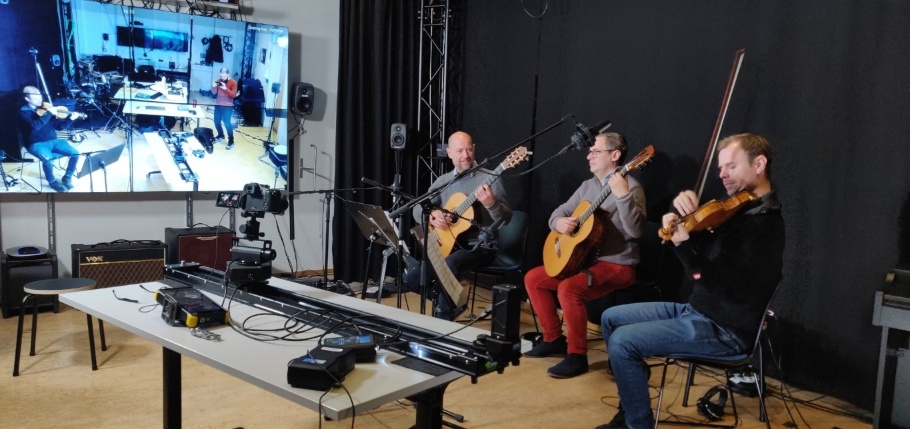
The recording of the audio took place before the video filming. Since the lead singer was based in Trondheim we planned a test-recording with “Carmen” placed in Trondheim and the musicians in Oslo, using LOLA. The musicians had to be placed in a way so that they could observe each other efficiently on the screen, however, the visual latency did not allow visual cues. In regards to the space limitations of the portal in Oslo, we did not have many options available for the tracking. We could not find an ideal place for the instruments to have a stereo recording. Therefore close-miking multichannel recording was the best choice - rather than different stereo techniques that are usual in recording chamber music. Also, considering the possibility of post-production that was the best choice possible. All microphones used in the recording were AKG C414. We monitored the sound and chose the placements in regards to that. We recorded three takes of each of the three songs we agreed on with the musicians.
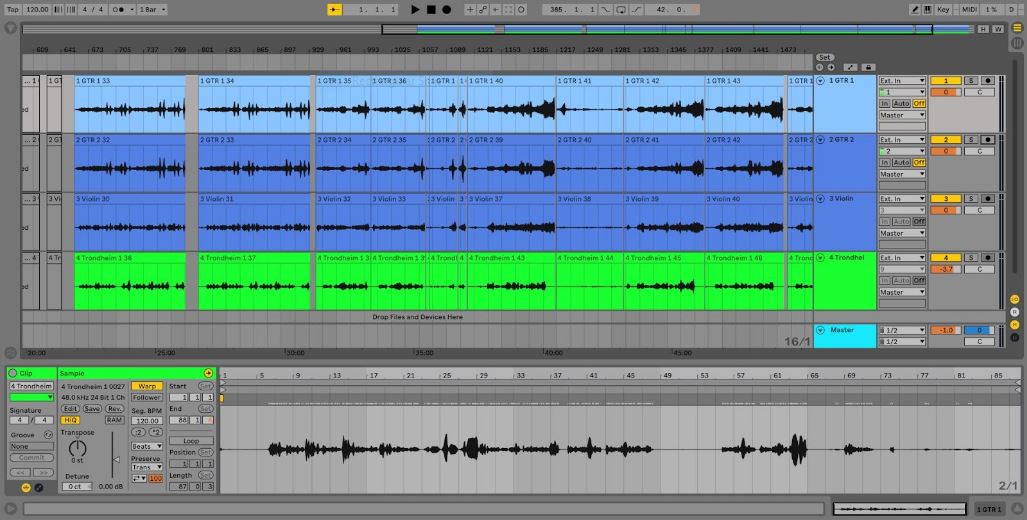
Routing
In Oslo - The Midas mixer was used as an interface and was connected to Guy’s laptop and the inputs were being recorded in Ableton Live. Regarding the sends on the Midas mixer in Oslo, there were two stereo pairs (Mixbuses). One was used for downmixing the inputs into a stereo pair and getting the playback from the DAW, sending them to LOLA (Trondheim). The other was being sent to the headphone amplifier in order for the musicians and the producer to be able to monitor themselves. This was to avoid the use of local PA system and to eliminate any sound bleeding from the corresponding location. The producer was in touch with Trondheim through talkback. Trondheim was being received on the Midas input channels and sent to the monitoring Mixbus.
In Trondheim - The routing system was the same in Trondheim. There were two stereo pairs (Mixbuses), one for monitoring and one for sending to LOLA. The singer was being sent to both and the producer was in touch with Oslo through talkback. As a backup, a laptop was connected to the mixer, using it as an interface. So it could send and receive from and to the mixer for recording and playback. Following you can find a diagram of the routing:
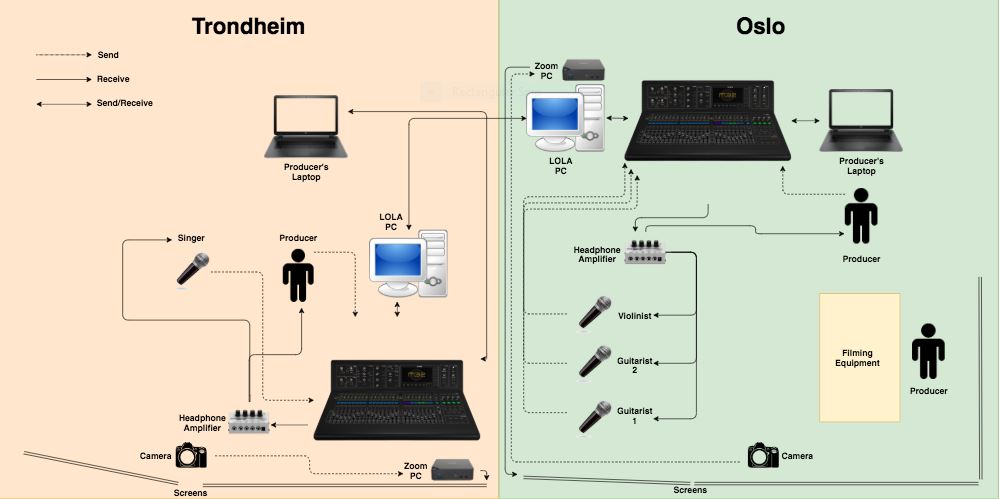
Later on, the audio files were shared over google drive and Sepehr prepared a rough mix of the chosen takes to be sent to the musicians. Once we agreed with the musicians on the specific musical segments that should be featured in the video. After receiving additional feedback from the musicians (mix, reverb, panning, etc.), the final mixing and mastering were done.
Video filming
Due to time issues, some not apparent before we actually were in production, the video shooting had to be conducted as quickly as possible. Without going too much into detail, we had to turn a few things around. The room itself offers some challenges; although we let the audience know that we are in a rehearsal situation, we obviously want the video to look as good and clean as possible, but also needed to work fast. We chose to film the same sequence from three different parts of the opera, from different angles, different shots, and focal length, to be sure we had enough footage to put it together, looking like a multicam production.
The light equipment in use are mainly 3 battery-driven LED mats with dimmer. Two of them also with variable color temperature. All this, together with the fact that they don’t get warm, makes them very versatile and easy to move around, something that helps a lot when in need of a fast workflow. Then, regarding the main shot of the musicians, we wanted a steady camera movement, adding a more dynamic design to the film and chose to use a slider, with a motion control system - also easy to mount and use. The camera, a Panasonic LUMIX GH4 is a lightweight, versatile camera, with a micro four third sensor. For these shots, we used an Olympus Zuiko 12 - 40 zoom lens.
For close-ups; we used a lens from Voightländer, with an extreme aperture and light sensitivity, that gives a very shallow depth of field, to add a kind of movie-feeling to the visual design. Regarding the main total shot, there were two basic challenges: First balancing the light in the room with the bright screen - obviously, we needed to make compromises. Then we have the fact that the singer on the screen is not in visual sync with the musicians, something that also leads to compromises when it comes to editing.
Editing
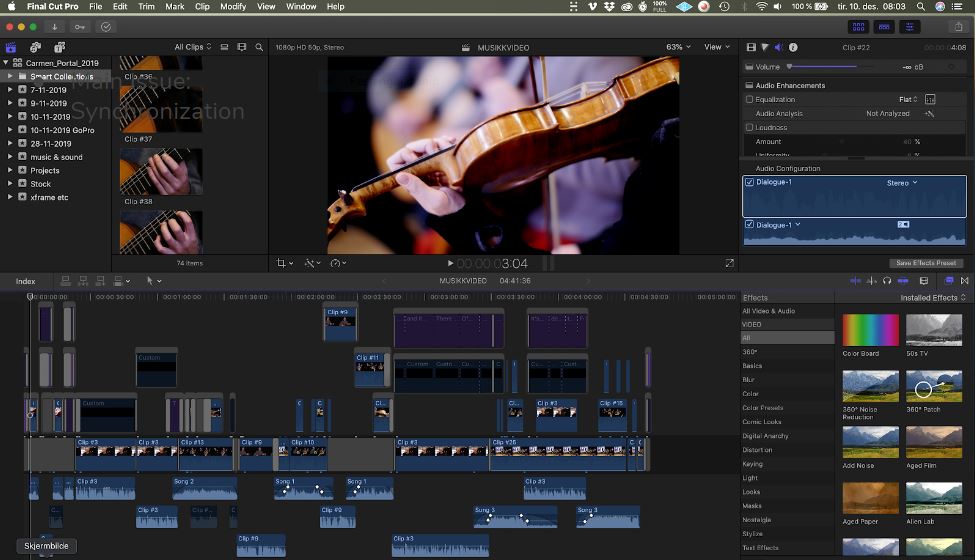
The overall challenge, as no surprise, was synchronization - in all parts. Getting all the footage into sync - or at least to look as if it was in sync. You really have to pay attention while editing this kind of material - one false move and everything moves out sync. A special problem occured due to the fact that the different music takes, that were used in the final mix, had small, variations in tempo. In other words, the final mix of the songs, that were to be used in the video, at some points consisted of different takes than the one the musicians originally used for playback, when recording. So, on the video timeline, the clip used for video would start in sync with the final audio mix of the song, and get out of sync as it played along.
Evaluation
Considering our finale result, the production of a 4-5 minutes promotional video that includes high-quality audio and video, looks reasonably professional and convincing, we believe that we reached our objectives. Within our group, we kept assessing the results throughout the process by maintaining close contact between us for constructive feedback. Another advantage of using this method was the division of the workload into smaller segments. Separating the production into four stages (testing, audio recording, video shooting, post-production) allowed us to maintain flexibility and helped us have better control over our progress, which lead to a satisfying outcome.
Video
Finally, following you can watch the two different versions of the video (Norsk and English):

